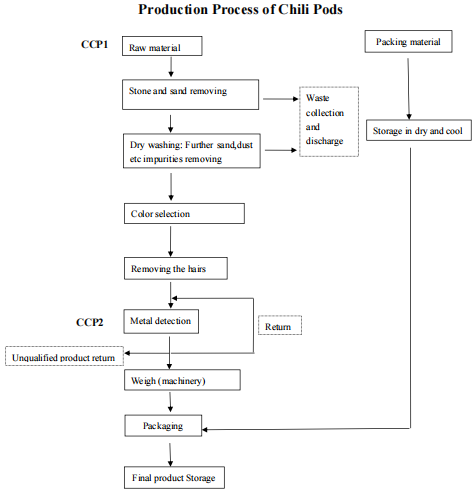Nov . 10, 2024 23:22 Back to list
Top Paprika Exporters Worldwide and Their Impact on Global Markets
The Global Landscape of Paprika Exporters
Paprika, a vibrant spice derived from ground peppers, is cherished around the world for its distinct flavor, color, and versatility. Its culinary applications range from seasoning dishes to enhancing the visual appeal of foods. The growing demand for paprika, especially in international markets, has positioned it as a significant agricultural product, leading to a surge in paprika exporters across various nations. This article delves into the current landscape of paprika exporters, highlighting key players, production regions, and the challenges they face.
Key Producers of Paprika
The leading producers of paprika are primarily located in regions with favorable climates for cultivating bell peppers. Notably, Hungary is renowned for its high-quality paprika, which is deeply rooted in its culinary heritage. Hungarian paprika is often categorized into different varieties, including sweet, hot, and smoked, each bringing a unique taste profile to dishes. In addition to Hungary, Spain is another major exporter, famous for its richly flavored Pimentón” - a smoked paprika that adds depth to a variety of recipes, from paella to chorizo.
The United States also has a significant paprika production industry, particularly in California and New Mexico. The climate in these regions is well-suited for growing peppers, and domestic production is often aimed at meeting local demand as well as exporting to international markets. Other countries such as India, Argentina, and Turkey are also emerging as prominent players, with increasing production capacities and export capabilities.
Market Dynamics and Export Trends
The global paprika market has witnessed a steady increase in demand, particularly from the food processing industry. Paprika is used in various products, including sauces, snacks, and ready-to-eat meals, making it a staple spice in many households. Moreover, the burgeoning interest in food aesthetics has further fueled the demand for paprika, as consumers increasingly seek colorful and appealing food options.
Export trends indicate that Asia and Europe are the largest markets for paprika products. In Europe, paprika is integral to many national dishes, leading to a consistent demand from both restaurants and domestic consumers. Meanwhile, Asian countries, particularly in the growing middle-class markets, are beginning to incorporate paprika into their cuisines, further driving export potential for paprika producers.
a paprika exporters

Challenges Faced by Paprika Exporters
Despite the promising market, paprika exporters face numerous challenges that can affect their competitiveness and profitability. One significant issue is climate change. Fluctuating weather patterns, including droughts and excessive rainfall, can adversely affect pepper yields. This unpredictability poses a risk to farmers and exporters, making it challenging to secure a stable supply.
Additionally, quality control is paramount in the spice industry. Exporters must adhere to strict food safety regulations and quality standards imposed by importing countries. For instance, issues related to pesticide residues or the presence of contaminants can lead to export bans or product recalls, significantly impacting the reputation and financial health of paprika exporters.
Logistics also plays a critical role in the paprika export chain. The movement of products from farms to processing facilities and eventually to international markets requires efficient transportation networks. Disruptions, whether due to natural disasters, geopolitical tensions, or pandemics, can lead to significant delays and increased costs.
Looking Ahead
The future of paprika exporters appears promising, amid growing awareness and appreciation for this spice. To navigate the challenges ahead, exporters must adopt innovative strategies, including sustainable farming practices, advanced processing techniques, and robust quality assurance measures. Engaging in direct trade, utilizing e-commerce platforms, and building strong relationships with international buyers can help mitigate risks and enhance profitability.
In conclusion, as the global palate continues to evolve, the demand for paprika is likely to rise. Paprika exporters have a unique opportunity to capitalize on this trend, but they must remain vigilant in addressing the challenges they face. Through resilience and adaptation, they can continue to play a vital role in the spice trade and bring the rich flavors of paprika to consumers around the world.

